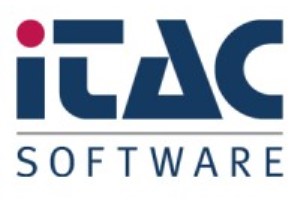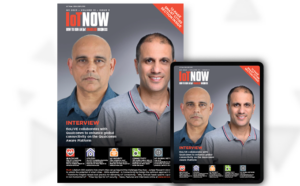
Keyfactor and Vanson Bourne have released findings from an independent survey and analysis that examines the state of IoT security for both manufacturers and end users. The report, “Digital Trust in a Connected World: Navigating the State of IoT Security,” reveals concerns and challenges modern businesses face when establishing digital trust in today’s connected world, and shows nearly all organisations (97%) are struggling to secure their Internet of Things (IoT) and connected products to some degree. The research survey also found that 98% of organisations experienced certificate outages in the last 12 months, costing an average of over US $2.25 million.
“Organisations worldwide are under mounting pressure to ensure their IoT and connected devices are protected while navigating an increasingly complex digital landscape that requires complete trust,” said Ellen Boehm, senior vice president, IoT strategies and operations at Keyfactor. “The results of this survey demonstrate the importance of identity-first security for those who manufacture IoT devices and those who deploy and operate them in their environment to establish digital trust at scale. Most organisations implement public key infrastructure (PKI) solutions in their IoT security strategy, which is a huge step in the right direction. However, it’s clear that with 97% of organisations facing IoT security challenges, security teams are struggling to leverage their tools efficiently. Ensuring that IoT device security is managed throughout its lifecycle will go a long way in both eliminating costly certificate outages and enhancing the long-term viability of IoT within the enterprise.”
The costly outages organisations have faced in the past year are not the only expense of inefficient IoT security. The report found that 89% of respondents’ organisations that operate and use IoT and connected products have been hit by cyber-attacks at an average cost of $250K. In the past three years, 69% of organisations have seen an increase in cyber-attacks on their IoT devices. The March attack on Amazon’s Ring that exfiltrated sensitive customer data such as recorded footage and credit card numbers is an example of the increase in IoT attacks.
“Many IoT security strategies fail to prevent and protect against IoT-targeted cyber-attacks because organisations lack the proper education and support needed to fully understand the task at hand,” said Boehm. “Over half of respondents agree that their organisation doesn’t have the proper awareness and expertise to prepare for IoT device cyber-attacks, spotlighting the need for more guidance to fully secure their devices. Organisations can’t protect against what they cannot understand.”
Other key themes and findings from the report include:
Proliferating growth of IoT devices and connected products in organisations
In the past three years, respondents reported a 20% average increase in the number of IoT and connected products used by organisations.
IT professionals are not fully confident in the security of their IoT and connected devices
Most organisations (88%) agree that improvements are needed in the security of IoT and connected products in use within their organisation, with over a third (37%) of respondents reporting that significant improvement is needed and 60% reporting that some improvement is needed. When it comes to specific strategies, 4 in 10 organisations report that they strongly agree they would benefit from using a PKI to issue digital identities on the IoT and Industrial Internet of Things (IIoT) devices in their environment.
IoT security budgets are increasing but are being used to cover staggering costs from certificate outages
While budgets for IoT device security are increasing year over year, with an anticipated increase of 45% in the next five years, half (52%) of that budget is at risk of being diverted to cover the cost of successful cyber breaches on IoT and connected products.
Organisations and manufacturers are split on who is responsible for IoT security
Of the respondents surveyed, 48% believed that the manufacturer of IoT or connected devices should be at least mostly responsible for cyber breaches on their products.
The study was conducted by Vanson Bourne on behalf of Keyfactor with responses from 1,200 IoT and connected product professionals across North America, EMEA, and APAC. All respondents had some responsibility or knowledge of IoT or connected products within their organisation, and included original equipment manufacturers (OEMs) and those who are using and operating connected devices within their organisation.
Comment on this article below or via Twitter: @IoTNow_
- SEO Powered Content & PR Distribution. Get Amplified Today.
- PlatoData.Network Vertical Generative Ai. Empower Yourself. Access Here.
- PlatoAiStream. Web3 Intelligence. Knowledge Amplified. Access Here.
- PlatoESG. Carbon, CleanTech, Energy, Environment, Solar, Waste Management. Access Here.
- PlatoHealth. Biotech and Clinical Trials Intelligence. Access Here.
- Source: https://www.iot-now.com/2023/10/18/137178-iot-security-survey-reveals-alarming-challenges-and-costs/
- :is
- :not
- 1
- 10
- 12
- 12 months
- 200
- 25
- a
- across
- against
- All
- also
- america
- an
- analysis
- and
- Anticipated
- APAC
- ARE
- article
- AS
- At
- attack
- Attacks
- average
- awareness
- BE
- because
- been
- behalf
- being
- believed
- below
- benefit
- both
- breaches
- budget
- Budgets
- businesses
- but
- by
- cannot
- card
- certificate
- challenges
- clear
- comes
- complete
- complex
- Concerns
- conducted
- confident
- connected
- connected devices
- Cost
- costly
- Costs
- cover
- credit
- credit card
- customer
- customer data
- cyber
- data
- Degree
- demonstrate
- deploy
- device
- Devices
- digital
- direction
- Doesn’t
- Education
- efficiently
- eliminating
- EMEA
- end
- enhancing
- ensure
- ensuring
- Enterprise
- Environment
- equipment
- establish
- establishing
- Examines
- example
- experienced
- expertise
- Face
- faced
- facing
- FAIL
- findings
- five
- For
- found
- from
- fully
- Go
- Growth
- guidance
- had
- Half
- hand
- Have
- Hit
- However
- HTTPS
- huge
- identities
- implement
- importance
- improvement
- improvements
- in
- include
- included
- Increase
- increasing
- increasingly
- independent
- industrial
- inefficient
- Infrastructure
- Internet
- internet of things
- iot
- IoT Device
- iot devices
- issue
- IT
- ITS
- jpg
- Key
- knowledge
- Lack
- landscape
- Last
- least
- Leverage
- lifecycle
- Long
- long-term
- managed
- Manufacturer
- Manufacturers
- March
- million
- Modern
- months
- more
- most
- mostly
- navigating
- nearly
- Need
- needed
- news
- next
- North
- north america
- now
- number
- numbers
- of
- on
- only
- operate
- operating
- Operations
- or
- organisation
- Organisations
- original
- Outages
- over
- past
- PKI
- plato
- Plato Data Intelligence
- PlatoData
- Prepare
- president
- pressure
- prevent
- Product
- Products
- professionals
- proper
- protect
- protected
- public
- Public Key
- recorded
- released
- report
- Reported
- Reporting
- Reports
- requires
- research
- respondents
- responses
- responsibility
- responsible
- Results
- Reveals
- right
- Ring
- Risk
- Said
- Scale
- secure
- security
- seen
- senior
- sensitive
- should
- Shows
- significant
- Solutions
- some
- specific
- split
- staggering
- State
- Step
- strategies
- Strategy
- strongly
- Struggling
- Study
- successful
- such
- support
- Survey
- surveyed
- Task
- teams
- that
- The
- The State
- their
- Them
- themes
- they
- things
- Third
- this
- those
- three
- throughout
- to
- today’s
- tools
- Trust
- under
- understand
- us
- use
- used
- users
- using
- via
- viability
- vice
- Vice President
- was
- Way..
- What
- when
- which
- while
- WHO
- will
- with
- within
- world
- worldwide
- would
- year
- years
- zephyrnet












